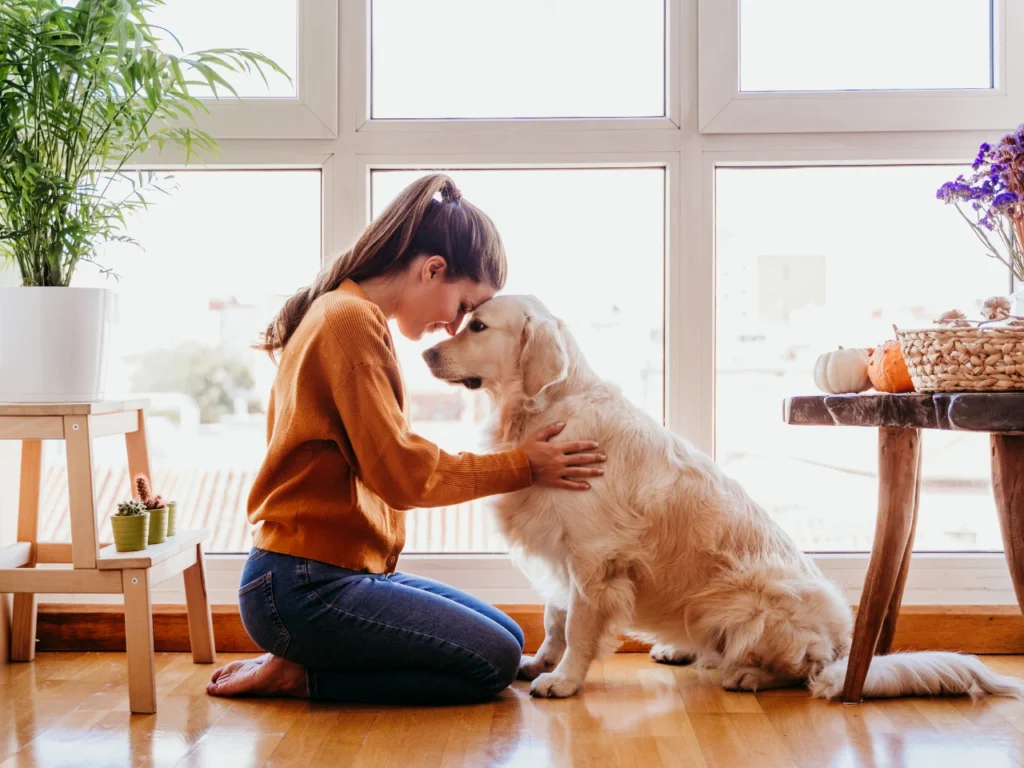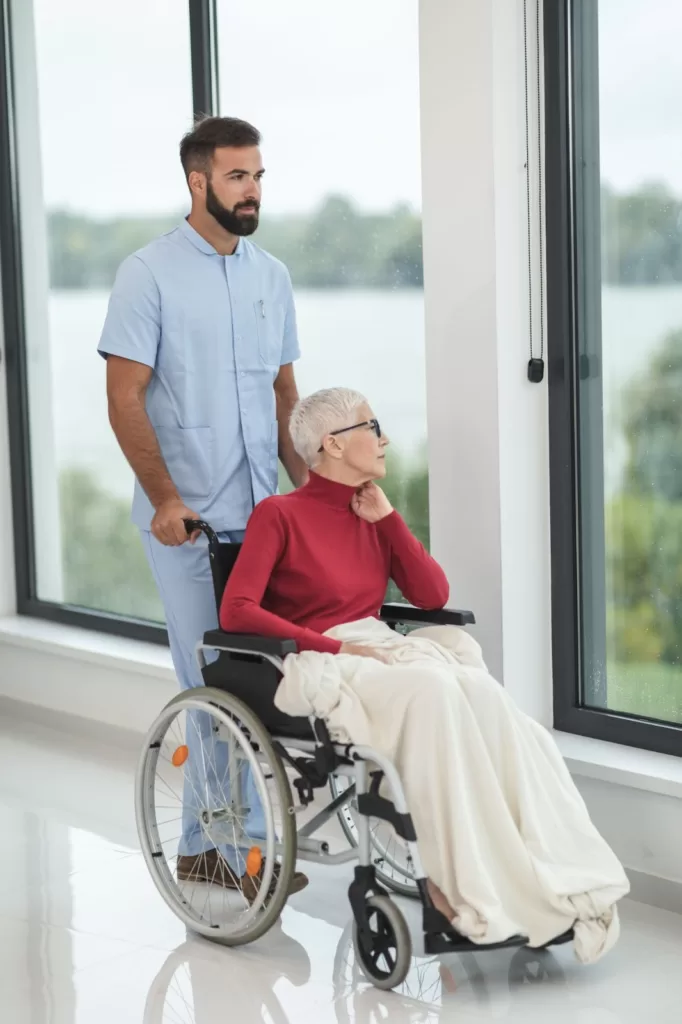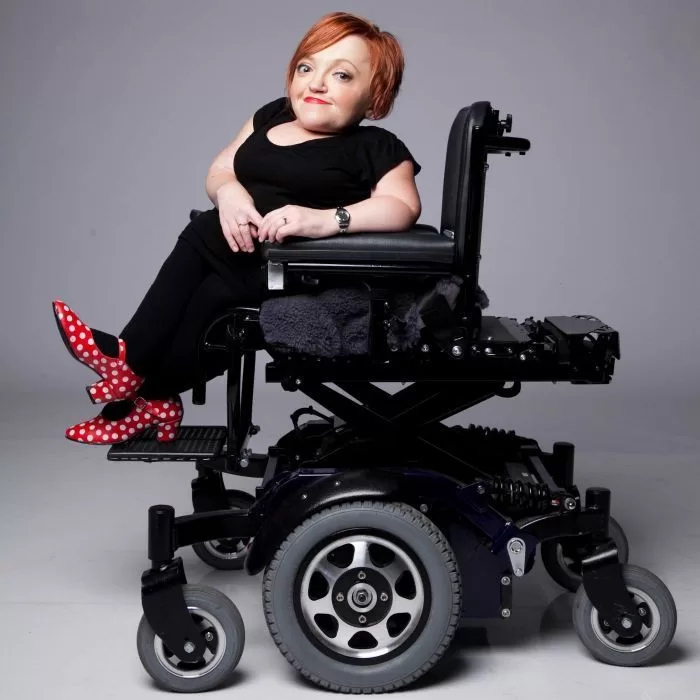Updated on August 24, 2025

Therapy dogs make people feel better just by being there. In hospitals, schools, nursing homes, and community centres, these dogs bring comfort, calm, and connection where needed most. Research shows that spending just a few minutes with a therapy dog can lower stress, reduce blood pressure, and improve mood. For children, therapy dogs can make reading less intimidating. For seniors, they ease loneliness. For patients recovering from illness, they bring joy and motivation.
The best part? Almost any friendly, well-mannered dog has the potential to become a therapy dog. With the right training and certification, your dog could be one of the many making a real difference in people’s lives.
Before we go further, it’s important to clear up a common confusion:
Therapy Dog vs Service Dog vs Emotional Support Animal
Therapy Dog
A dog that, with its handler, volunteers to comfort other people in settings like hospitals or schools. They have no special legal access beyond what the hosting facility allows.
Service Dog
Trained to perform tasks for one individual with a disability (protected under the ADA). For example, guiding someone blind, alerting to seizures, or retrieving objects.
Emotional Support Animal (ESA)
This type of animal provides comfort to its owner through companionship but does not require specialised training and does not have public access rights.
>> Learn more about Therapy Animals
This article is about therapy dogs and how you and your dog can become a certified volunteer team that spreads comfort wherever it’s needed most.
What is a Therapy Dog?
The primary job of a Therapy dog is to provide comfort. That can mean curling up next to someone in a hospital bed, letting a child read a book aloud without fear of judgment, or walking through a rehabilitation centre to give patients a mental break from hard therapy sessions.
Therapy dogs can be any size, from a gentle Great Dane to a lap-sized Shih Tzu. What matters is not the breed but the temperament. These dogs must stay calm around medical equipment, sudden noises, wheelchairs, or children rushing to hug them.
The settings vary from nursing homes, pediatric hospitals, schools, libraries, shelters, and even disaster-response sites where survivors are in shock. Wherever stress is high, therapy dogs can help soften it.
How to Know if Your Dog is Suited to be a Therapy Dog
Not every dog is suited for therapy work, and that’s okay. The job requires a very specific temperament. Here are the key traits:
- Calm under pressure: Loud noises, sudden movements, or unfamiliar equipment shouldn’t rattle them.
- Friendly but not pushy: They should enjoy people but not overwhelm them.
- Gentle with touch: Some patients may grab clumsily or pet awkwardly; the dog must remain steady.
- Adaptable: Every visit is different. Some are quiet and calm, others are noisy and chaotic.
- Non-aggressive: Even subtle signs of aggression disqualify a dog.
On the health side, therapy dogs must:
- Be at least one year old (some organisations require two).
- Have up-to-date vaccinations.
- Pass a vet health screening.
- Be free of parasites and on preventive medication.
Breed doesn’t matter. Goldens and Labs are common, but mixed breeds and rescues can also be therapy dogs if their personality fits.
A simple way to gauge if your dog might be a good therapy candidate is to think about how it behaves in everyday situations. Does your dog genuinely enjoy meeting strangers, greeting them with curiosity and friendliness rather than hesitation? Can it walk calmly on a leash without pulling or becoming distracted? How do they respond when someone hugs them too tightly, makes a sudden noise, or clumsily pets them? Do they stay relaxed, or do they flinch and pull away?
Are they comfortable exploring new environments, from busy sidewalks to quiet waiting rooms, without showing signs of stress? If your dog handles these situations easily, there’s a strong chance they have the right temperament to thrive as a therapy dog.
Training Your Dog for Therapy Work
Even the sweetest dog needs structured training before becoming a therapy dog. Here are a few key things to get started.
Start with the basics
Your dog should reliably respond to commands like sit, stay, come, down, heel, and leave it. Obedience is necessary; without it, your dog can’t proceed.
Socialisation
Expose your dog to a wide range of people, including children, seniors, and people with mobility devices. Introduce them to crowds, elevators, loud environments, and surfaces like tile, carpet, and slick hospital floors. The goal is to make them confident in any situation.
Desensitization
Therapy dogs encounter medical equipment (wheelchairs, IV poles, crutches) and sudden loud sounds. Gradual exposure helps them learn to ignore these distractions.
In addition to general obedience, therapy dogs must master a few skills specific to their work. They must be able to stand calmly while being petted by several people at once, remain steady and gentle no matter how clumsy the touch might be, and resist the urge to grab food or react to objects dropped on the floor.
A therapy dog should also be comfortable walking past other animals without barking, lunging, or getting distracted. It should also sit or lie politely at its handler’s side without jumping up for attention. These behaviours create the calm, predictable presence that people in hospitals, schools, or nursing homes rely on.
The best way to teach these skills is through positive reinforcement. Dogs learn far more quickly when associating good behaviour with treats, praise, or play. Correcting mistakes with harsh methods only makes them anxious, which is the opposite of the calm confidence therapy dogs need to project.
Training Options
When it comes to training, a professional handler might be the best way to start. These handlers are experienced and have different steps to sensitise your dogs. To build a strong foundation, many begin with obedience classes at local clubs or pet stores.
Others look for specialised therapy-dog prep courses that simulate the distractions and interactions a therapy team will face during certification tests and real visits. Some owners train independently, but working with a professional trainer can make the process smoother and quicker, especially if your dog needs extra help in certain areas.
Every dog learns at their own pace; some may be ready in a few months, while others take a year or more.
Getting Certified
Most facilities will only allow therapy dogs certified through a recognised organisation. Certification ensures consistency and safety.
Major Organisations Include:
- Pet Partners
- Alliance of Therapy Dogs (ATD)
- Therapy Dogs International (TDI)
- Love on a Leash
The Certification Process Typically Involves:
- Health screening: A vet form confirming your dog is healthy and vaccinated.
- Behaviour evaluation: Testing your dog’s response to handling, crowds, sudden noises, food distractions, and unusual situations.
- Handler requirements: Background checks and training in safe visitation protocols.
- Supervised visits: Some organisations require you to complete supervised visits before full certification.
- Costs: Membership fees and evaluations usually cost between $35 and $100, depending on the organisation, other costs, plus any training classes you choose.
- Insurance: Once certified, most organisations provide liability insurance for your visits.
To conclude, if your dog has the right temperament and is willing to train, you can become part of that good, bringing comfort to children, seniors, patients, and anyone who could use some comfort.
MORE FROM CENTRE DISABILITY SUPPORT



